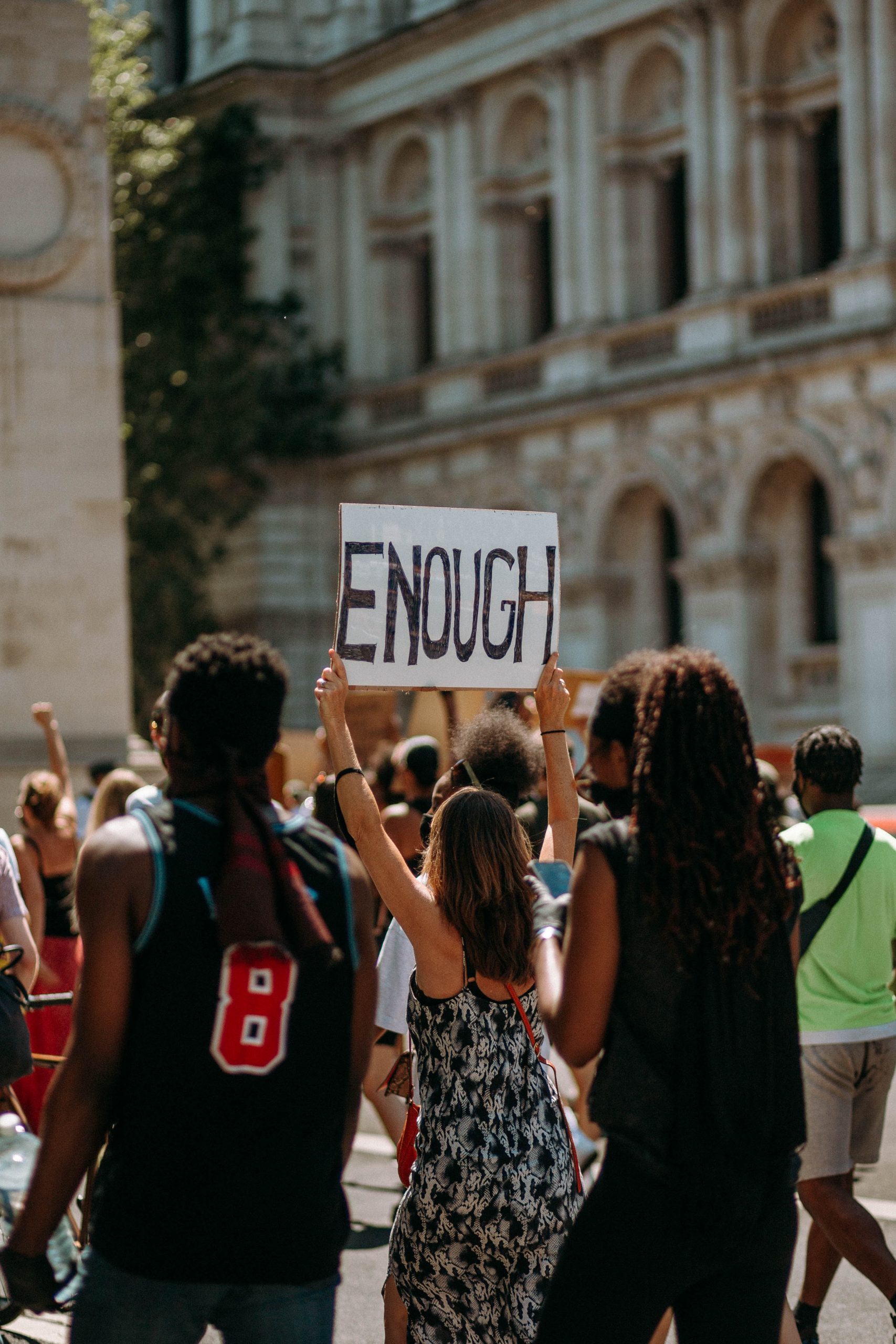Clients are sometimes hesitant to start EMDR, and for good reason. The idea of dredging up painful experiences from your past is uncomfortable, there’s tons of horror stories floating around the internet of people getting retraumatized with bad EMDR work, and frankly the mechanism for change sounds bogus. “What, I move my eyes back and forth? Like hypnosis?” (A real question I’ve received.) I’m here to tell you that the fear is valid, and that there are ways to make EMDR a better experience for you as a client. While it’s true there are no guarantees, there are several ways to go about making EMDR a safer experience for you – especially if you are someone with complex trauma where starting from the beginning may feel too overwhelming.
What is EMDR?
The tl;dr is that EMDR stands for “Eye Movement Desensitization and Reprocessing”. It’s a therapeutic modality known primarily for its ability to help people heal from trauma, but has other uses as well. We know that EMDR works, but exactly why it works is actually a bit up for debate.
We think it’s partly because we’re mimicking the eye motions done in REM sleep, which we know is crucial for the brain’s daily memory processing. It’s also thought that having someone think about a painful memory while giving them a complex task (eye movements/taps) keeps the brain from “falling into” the memory so other neural pathways remain open. Either way, we know that utilizing these eye movements prompts the brain to use its innate plasticity (ability to change) and leverage the adaptive information processing (AIP) system.
Adaptive information is what we call the helpful information the brain has access to; the processing system is the brain using that information and applying it onto memories. In EMDR, this can look like someone recalling how hard they tried to protect themselves and feeling proud, whereas before they only felt weak or shameful.
EMDR vs EMDr
After I got trained in EMDR, I was so excited to bring this shiny new tool to my clients. For some clients I’d had for years, I was convinced EMDR would be a game changer. They’d made amazing strides without it – imagine what they could do with it! In my whimsical naivete, I spun little fantasies in my head about my clients being as excited as I was to start EMDR. They’d say “Wow Mia! I can’t wait! Can we start now?” to which I’d say “Well, there’s some other things we have to do first. I know. Disappointing.”
Yes, I’d prepped myself to have to tell people to slow down. So when several of my clients met me with hesitancy, skepticism, and avoidance, I was…perplexed. So I took a step back, did some investigating, and figured out a pretty important miscommunication. My clients (understandably) assumed we’d be doing EMDR (capital R), while my plan had been to use EMDr (little r). If you’re thinking “I don’t really see how capitalization affects anything,” give me a moment to explain.
Standard EMDR issue-based treatment planning has clients pick an issue (say, “self-worth”) and have clients construct a timeline of relevant events, starting from most recent and “floating back” to the earliest memories. The earliest ones would then (usually) be targeted first. The standard EMDR protocol (EMD capital R) then would have clients sit with that memory and free associate during processing. Anywhere their mind would take them during processing would be on the table, including unearthing some long-buried memories, hopping through time, or going even further back. Any channel opened would be explored and the therapist would offer very little structure.
As a therapist that mostly works with complex trauma, most of the clients I was eyeballing to do EMDR with have extensive trauma histories starting in early childhood continuing until adulthood. And once I started asking the right questions, I realized most of these clients were worried that I was going to throw them into reprocessing their most painful, vulnerable, traumatic memories from childhood right from the start with no guardrails.
Many of them were savvy enough to know what EMDR is and/or did their own research after I brought it up, and what they discovered about the process told them we needed to go to the origin point of the trauma and dig around in it. So of course they were wary! They’ve spent years carefully constructing all sorts of coping skills to get as far away from that trauma as possible, and as far as they were concerned, I was going to show up with a bulldozer called EMDR and ruin all their hard work.
The plan had never been to dive into the epicenter of their respective traumas as their introduction to EMDR. While starting at the beginning may make sense for some clients, there are just as many clients that would not benefit from that approach at all. In addition to processing the painful material, clients are having to learn a fundamentally new process that feels very different from “normal” talk therapy.
Many clients also told me they were worried about “getting stuck” – and (rightfully) feared getting stuck somewhere they can’t afford to be. Thus, my plan was to use EMDr – which is a slight variation on the standard protocol that allows more flexibility in choosing the order of processing and also consciously limits processing by frequently redirecting the client back to the target memory. In this case, a memory I was going to choose alongside my client that felt a manageable level of distressing. Once I told them the plan, my clients became much more open to learning about the process and beginning to lay the groundwork.
Why is EMDR like that?
If you’re anything like me, you might be thinking “Why would a method that’s designed for trauma want to have people start with (possibly) the worst parts of their trauma? How is that trauma informed?” It’s a fair question. There is a method to the madness, and one you might hear if you’re looking to start EMDR. The reasoning for this is because during processing, earlier memories can sometimes “block” reprocessing newer ones because the negative feelings and beliefs were encoded in the brain first in the earliest memory, so reprocessing a later memory doesn’t actually “undo” those feelings or beliefs. In my training, they used the language “flushing out the ick”.
Imagine you need to clean off a muddy water slide. Most people would turn the hose on the top and let the water wash the mud down the slide rather than start at the foot of the slide and go layer by layer upward. You’re just going to end up creating double work by dirtying the places you’ve already cleaned that way. I appreciate the metaphor, but it feels too one-size-fits-all for my taste.
Personally, I think about it more like tangled hair. For some people, their tangles aren’t that significant, or they’ve got some reliable tricks that help them . They can start at their scalp and brush their tangles out from the top. No big deal. Brushing from the scalp down is EMDR, and for those people it makes sense to start there. For other people, their tangles are way more complicated. To start from their scalp would make the tangles worse, could damage the hair, and could end up hurting them. In that case, it’s better to start from the ends and work your way up. It’s slower, but there’s less risk of damage. That’s the EMDr process, and for those people with the difficult tangles, leading with EMDr might make more sense.
Making Sure EMDR is As Safe as Possible
Even while going slow, the idea of EMDR can still be scary. If you’re interested in pursuing your own EMDR work, knowing some of the ways therapists help prepare you for your journey may be important to know in advance.
A crucial introductory step to EMDR is resourcing, where therapists help clients build proficiency in utilizing coping skills/ exercises, connect them to resources in their community, and bring awareness to any unconscious adaptive information the client may already have. This is all to make sure clients can safely handle the intensity of the EMDR experience. How each therapist introduces EMDR to a client varies, but before beginning you should:
- Have several ways to safely experience and contain big feelings.
- Know how to identify when you are approaching the end of your window of tolerance.
- Have access to people (real or imagined) that provide positive messages, comfort, etc.
- Trust your therapist.
Number four is really important! By “trust your therapist,” I mean you need to be able to trust that they will be in tune with your emotions, know how to pick up on signs that you might be having a hard time, and feel comfortable advocating for yourself to them. Again: you need to feel comfortable advocating for yourself to your therapist.
Therapists can do our best to monitor your experience and adjust, but ultimately we’re not you. We can get it wrong. It’s more important that you as a client feel comfortable enough to say if you need to stop early, change how the bilateral stimulation is given, or need some time to collect yourself before proceeding. If you don’t feel comfortable telling your therapist to stop, or you don’t think your therapist would listen to you if you asked them to stop, please address this with them before trying to do EMDR.
As for how EMDr fits into the larger EMDR framework, I consider EMDr part of the resourcing process because clients will naturally build proficiency in leveraging their own adaptive information, noticing “stuckness” and finding ways around it, and getting a sense for when EMDR works better for them (faster or slower eye movements, longer sets of eye movements, incorporating butterfly taps) in preparation for tackling larger issues. It’s driving on backroads and parking lots before jumping onto the highway.
After EMDR: What to Expect & Setting Up for Success
I always feel better about doing something if I know what to expect of it. (We’ve all looked at the menu of a restaurant before going at least once, right?) Here are some common things to expect after an EMDR session and ways to make navigating your life after EMDR easier.
1. Plan EMDR on a “light” day.
EMDR is exhausting. It can leave you drained, raw, and vulnerable (among other things.) Plan EMDR on a day that you don’t have a lot going on. If you know Wednesdays are packed for you, try to find an alternative day. If you have no choice, try to make EMDR the last thing you do that day. Some people also find success doing EMDR virtually so that they don’t have to drive home. If you end up having a very full day on what is supposed to be an EMDR day, consider postponing EMDR until your next session.
2. Plan EMDR with plenty of “padding”
Sometimes, people experience feeling a little disoriented after an EMDR session. Give yourself extra time to sit in the waiting room or your car afterward to reorient yourself. The last thing anyone wants is for you to be unsafe while you drive because you’re feeling rushed. If you know waiting is not possible, consider if someone could drive you to/from therapy so you could leave “on time” in a safe way.
3. Plan to have more “stuff” come up after the session.
Many times, your brain might need to continue processing what happened in your EMDR session. This is expected. However, if you notice the thoughts and emotions are distressing and getting worse, make sure you’re prepared to practice your grounding and containment techniques. If those don’t work, contact your therapist immediately. It might be time to reassess your readiness to process that issue or give you additional coping strategies.
The key takeaways: EMDR is hard, but it doesn’t have to be scary. Take it slow. Find a therapist you trust. Set yourself up for success. Especially for someone dealing with complex trauma, the trauma has been there awhile. Even if it’s hard, try to give yourself some grace to take the time you need to heal.
Resources/Further Reading:
Introduction to EMDR Therapy – EMDRIA (EMDR International Association)












